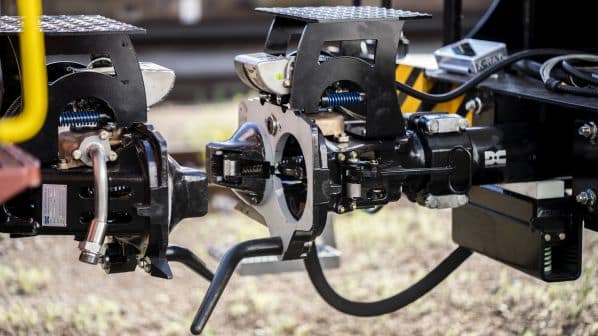SEVEN European industry partners led by DB Cargo have founded the DAC-Fit consortium with the goal of successfully fitting the Digital Automatic Coupler (DAC) to the 500,000 wagons in service across Europe.
The consortium will analyse the condition of the existing wagon fleet and identify the challenges to DAC migration, with the target of starting in 2028. It will also develop a plan for full-scale upgrades and or retrofits of the locomotive and wagon fleet, including identifying the workshop capacity required to carry out DAC retrofit and drawing up an implementation plan.
The DAC-Fit consortium is receiving financial support from Europe’s Rail Joint Undertaking (ERJU). Preparation of the grant agreements are still underway, ERJU told IRJ. However, according to the call for proposals for the DAC Fleet Retrofitting and Retrofitting Capacity Plan, a €1.5m budget is anticipated from ERJU, with the consortium members expected to contribute a minimum total of €1.9m for operational and additional related activities. The project is expected to take two years to complete.
The consortium members are:
- DB Cargo, Germany
- K+V, Germany
- Instytut Kolejnictwa, Poland
- VUKV, Czech Republic
- BME ITS, Hungary
- VPI European Rail Service (VERS), Germany, and
- The Fraunhofer Institute for Material Flow and Logistics (IML), Germany.
Specifically, K+V, Instytut Kolejnictwa and VUKV will provide technical analysis for the project, while VPI will provide analysis of European workshops and mobile service teams, leaning on experience from its network of 280 fleet maintenance sites across Europe.
"Thanks to our network, we have the necessary knowledge and experience on how workshops must be prepared to retrofit fleets with the DAC," say the managing directors of VERS, Mr Heiko Radke and Mr Joachim Wirtgen.
The Fraunhofer Institute will work to the develop the implementation plan. “We not only provide support with IT resources, but also have comprehensive expertise in the area of the so-called ‘first and last mile’ for many factory and industrial railways,” says Dr Agnes Eiband of Fraunhofer IML.

